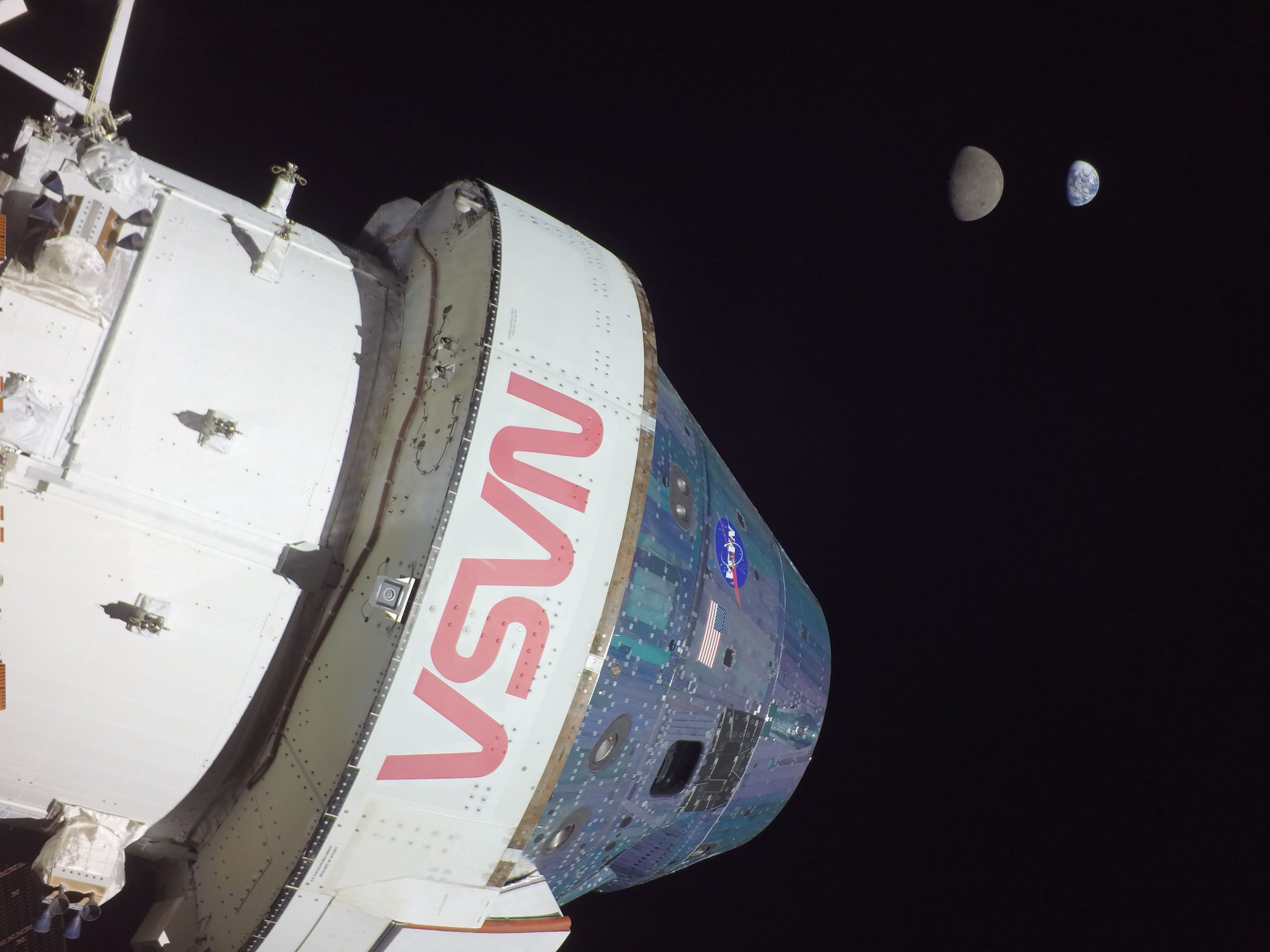Artemis 1 Orion spacecraft hits halfway point of epic moon mission

NASA's Orion spacecraft hit the halfway point of its historic moon mission in fine form.
Monday (Nov. 28) marked flight day 13 of the nearly 26-day-long Artemis 1 mission, which sent an uncrewed Orion toward the moon atop a Space Launch System (SLS) megarocket.
The Nov. 16 launch was nearly flawless, and Orion has continued to hit its marks in deep space, NASA officials said.
"The spacecraft is operating just tremendously well so far, and we're really happy with its performance overall across all the subsystem areas," Howard Hu, NASA's Orion program manager, said in a press briefing on Monday afternoon.
In photos: Amazing views of NASA's Artemis 1 moon rocket debut
Indeed, the Artemis 1 team is considering giving themselves and Orion more to do: They may add seven more test objectives to the mission that would help further characterize the capsule's thermal environment and propulsion system, NASA officials said on Monday.
That's not to imply that the mission has gone perfectly. Early in the flight, Orion's navigating star trackers returned anomalous readings, which the team eventually traced to temporary "dazzling" by the capsule's propulsion system. And the team lost contact with Orion for 47 minutes on Nov. 23 due to a configuration issue with NASA's Deep Space Network of radio dishes.
Breaking space news, the latest updates on rocket launches, skywatching events and more!
Artemis 1 team members are still working their way through a few other possible issues, but NASA officials said there's no cause for concern.
"None of the anomalies or 'funnies' that are out there are of consequence," Artemis mission manager Mike Sarafin said during Monday's briefing.
Orion took a long and looping trip to the moon, finally arriving in a distant retrograde orbit on Friday (Nov. 25). On Monday, the spacecraft reached the maximum distance from Earth that it will attain in the mission — 268,563 miles (432,210 kilometers).
No spacecraft designed to carry humans has ever gotten so far from home. The previous record, 248,655 miles (400,171 km) was set in 1970 by NASA's Apollo 13 mission, which was supposed to land on the moon but had to loop around the body after suffering a serious problem in flight.
Orion will stay in lunar orbit until Thursday (Dec. 1), when it will fire its main engine to start the journey home. If all goes according to plan, the capsule will splash down in the Pacific Ocean on Dec. 11, bringing the Artemis 1 mission to a close.
Though it's still two weeks away, NASA and the U.S. Navy are already gearing up for Orion recovery operations.
"The team will deploy Tuesday [Nov. 29] for training at sea before return to shore to make final preparations ahead of splashdown," NASA officials wrote in an update on Monday night.
If all goes well with Artemis 1, NASA plans to launch astronauts around the moon on Artemis 2 in 2024. A year or so later, the Artemis 3 mission will land astronauts near the lunar south pole.
Mike Wall is the author of "Out There" (Grand Central Publishing, 2018; illustrated by Karl Tate), a book about the search for alien life. Follow him on Twitter @michaeldwall. Follow us on Twitter @Spacedotcom or Facebook.

Michael Wall is a Senior Space Writer with Space.com and joined the team in 2010. He primarily covers exoplanets, spaceflight and military space, but has been known to dabble in the space art beat. His book about the search for alien life, "Out There," was published on Nov. 13, 2018. Before becoming a science writer, Michael worked as a herpetologist and wildlife biologist. He has a Ph.D. in evolutionary biology from the University of Sydney, Australia, a bachelor's degree from the University of Arizona, and a graduate certificate in science writing from the University of California, Santa Cruz. To find out what his latest project is, you can follow Michael on Twitter.
